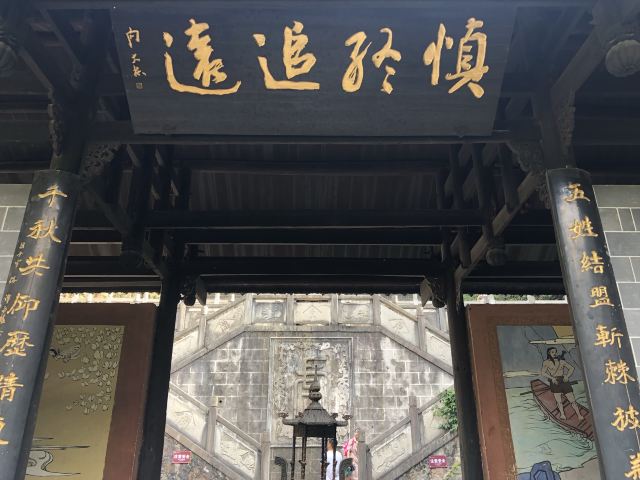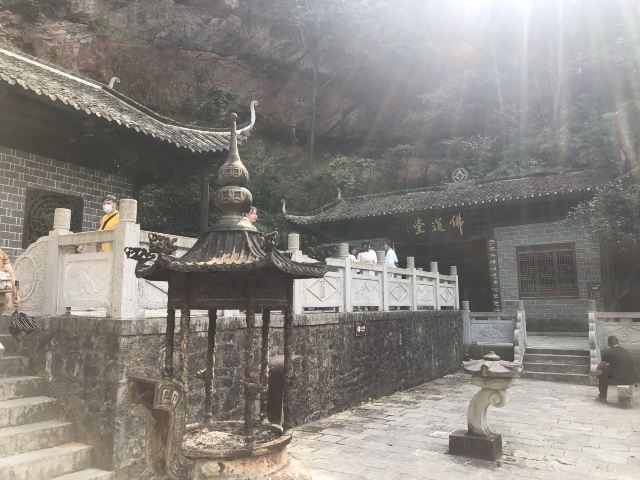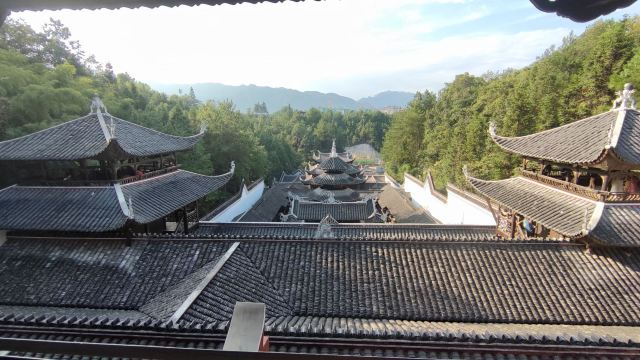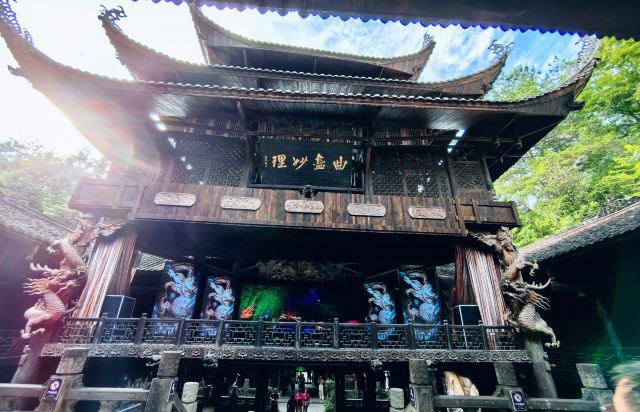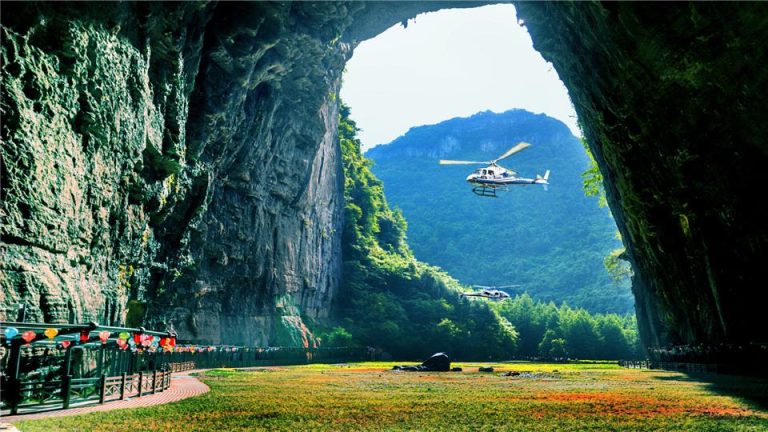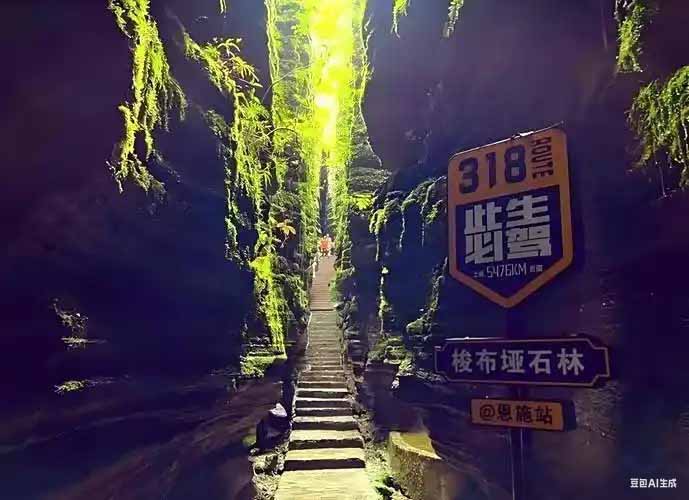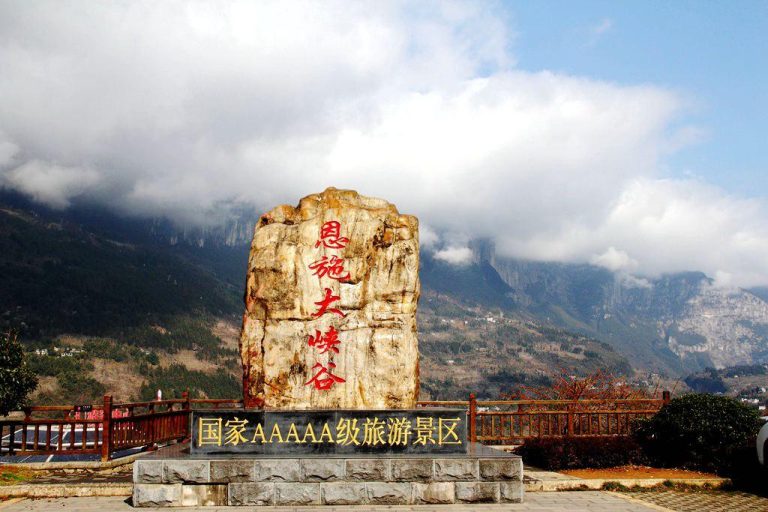address
No. 138, Tushi Road, Enshi City, Enshi Tujia and Miao Autonomous Prefecture
Opening hours
The park is open; open from 07:30-18:00 (ticket sales stop at 18:00, admission stop at 18:00)
Official phone number
Ticketing consultation: 0718-8458166
Enshi TusiCity, like a bright pearl inlaid in the northwest of Enshi City, Hubei Province, exudes a unique historical and cultural charm. It is located in a place called Zhoushan Bay in a small place name, only 500 meters away from the seat of the municipal government, and covers an area of more than 300 acres. It is the largest, most typical style and most spectacular antique architectural complex among the Tujia hanging foot buildings in the country. It enjoys the reputation of “the first Tujia City in China”.
Location and transportation
Enshi Tushi City is located at No. 138, Tushi Road, Enshi City, Enshi Tujia and Miao Autonomous Prefecture, Hubei Province. Enshi City is located in the southwest of Hubei Province, east longitude 108°23’12’ – 110°38’08’、 North latitude 29°07’10’ – 31°24’13’, It is located at the intersection of Hunan, Hubei and Chongqing, and was formerly known as Shi Nanfu. The transportation here is convenient. If you choose to travel by public transportation, you can arrive in Enshi city first, and then take a taxi or bus to the scenic area; if you drive by yourself, you can directly navigate to “Enshi Toast City”. There are parking lots around the scenic area.
Ticket information
The ticket price for Enshi Toast City is 45 RMB per person for an adult ticket.
However, scenic spots also provide preferential policies for specific groups of people:
Students (with valid student ID) and seniors aged 60 (inclusive)-69 (inclusive) (with ID card) can enjoy a half-price discount, that is, 22.5 yuan / person;
Children under 1.2 meters tall are free of charge; seniors over 70 years old (inclusive) are free with ID cards. In addition, pay attention to some travel platforms, and there will often be preferential activities. Booking in advance can also save time.
Attraction features
- Tushi City Gate Tower: When you walk into Enshi City of Tushi, the first thing that catches your eye is the towering Tushi City Gate Tower. It is also called Tushi Chaomen or looking at the building. It is a commemorative building that shows the prestige and merits of Tushi. The gatehouse is 25 meters high and 12 meters wide. It is a wooden building with a pure mortise-and-tenon structure. It is tall and spectacularly constructed. In front of the gatehouse, there are two statues of gods and men holding dragons on the left and right, called ‘Heavenly kings send children’. There are three murals on the right wall. Except for the middle one, which shows national unity, the one on the right is the “Maogus” that reflects the life of the ancestors of the Tujia, and the two on the left.The big bruiser is “Nuribaga” and “Ke Doumao”, the patron saints of Tushi City Gate Tower. The doors and windows of the gatehouse are composed of 200 doors and 189 pieces of hollow carved patterns, most of which are opera texts and folk legends. The entire gatehouse also contains many kitkat and pun-like numbers, such as the gatehouse’s height of 4 floors, 12 columns, and 24 beams, which mean the 4 seasons, 12 months, and 24 solar terms of the year, respectively.
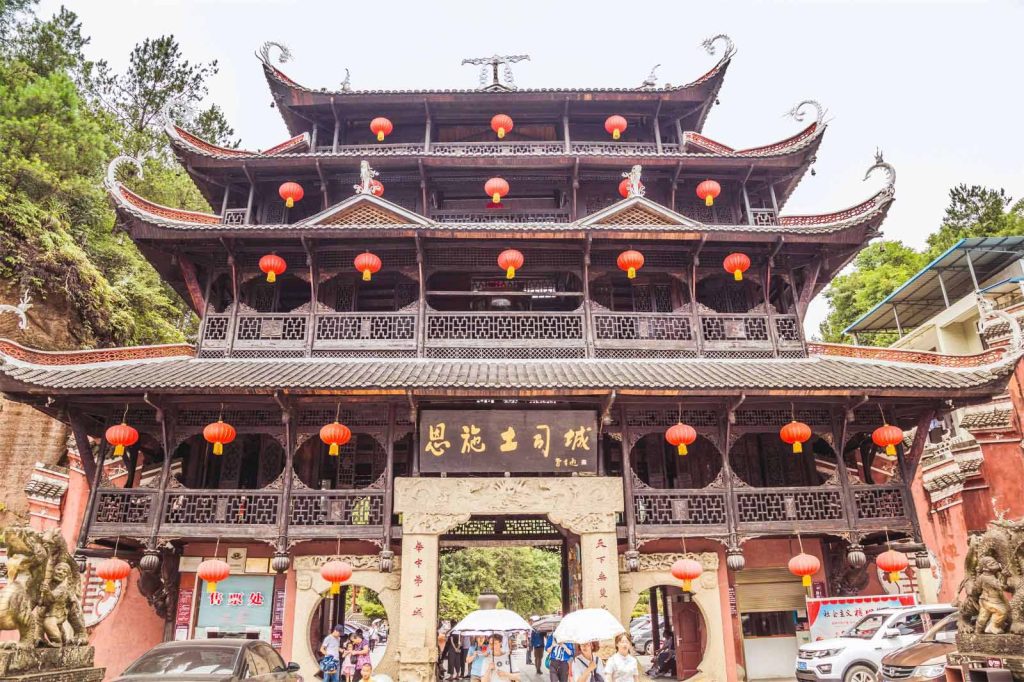
- Dong Nationality Wind and rain Bridge: This antique wind and rain bridge, with two pavilions standing on top of the bridge corridor, with cornices and corners, painted buildings and carved beams, is very exquisite and beautiful. Wind and rain bridges are mostly built at river crossings. There are railings and long seats on both sides of the bridge corridor for business travelers carrying their shoulders to rest, cool off, and shelter from the rain. Therefore, they are called “wind and rain bridges.” Here, visitors can take a break and feel the tranquility and comfort.
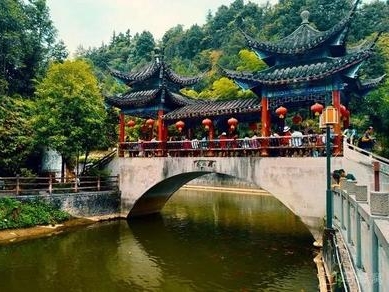
- Linjun Temple: Located on the mountain opposite the cruise terminal is the Linjun Temple of the ancestors that the Tujia people admire very much. Linjun Temple is a three-story, three-entry, heavy-eaves, colonnaded building, sitting west to east, standing on the mountainside, towering and imposing. Close to the temple, there are huge long scroll murals painted along the mountain walls. The murals record Lin Jun’s heroic feats in his life, called “Lin Jun’s victory in opening up the territory.” According to legend, Linjun was the son of a person surnamed Ba, named Ba Wuxiang. He led the Ba people to expand their territory, established the kingdom of Pakistan, and promoted the civilization and progress of the Ba people. In memory of his merits, the Bahá’í people built this temple with statues and sacrifices, and the incense was endless at all hours.
- Training Ground: The Tusi Training Ground, also known as the Archery Range, served as the site where Tusi soldiers conducted drills and martial arts training. In addition to standard weapons like swords, spears, and halberds, it featured Miao-style barefoot climbing ladders, arrow targets, mulberry wood bows, pole climbing equipment, and strength-building tools such as stone mills and stone weights. One cannot help but envision the scenes of Tusi soldiers rigorously training here in years past.
- Tujia houses: This is a typical Tujia house building-hanging foot building. Hanging foot buildings are mostly built by the mountains and rivers, and fruit trees and bamboo forests are planted in front of and behind the houses. Amidst the green trees, the first floor was singled out, highlighting the beautiful artistic conception of the “Xiaoqiao Flowing water Family”. Generally, it is a single-sided hanging foot building with three rooms, two on the left fall in place, and one on the right hangs in the air. On the left is the fire room, in the middle is the hall room, and on the right is the wing room. There are pillars and no walls under the wing, and the upper floor is dry, which is used to house people or store food. This design not only avoids the harm of poisonous snakes and beasts to people, but also feeds animals downstairs, places heavy furniture, and piles up faggots. Get more in one fell swoop.
- Jiujintang: Jiujintang is the core part of the entire Tusi City. It is composed of 333 pillars, 333 stone pillars, 330 doors, more than 90 windows, thousands of carved wooden windows, thousands of purlins, and tens of thousands of rafters. With a depth of 99.99 meters and a width of 33 meters, and a total construction area of 3,999 square meters, it is currently a rare wooden structure with pure tenon and mortise joints in China. Looking up, the corners of the pavilions, the corners of the eaves, and the flying claws of the eaves are scattered up and down, showing a majestic, towering and magnificent, authentic imperial city of toast. It focuses on the architecture, sculpture, and painting arts of the Tujia people, and every detail contains the wisdom and creativity of the Tujia people.
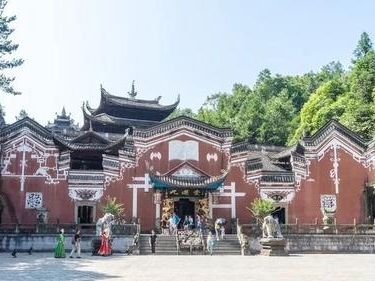
- City Wall: The Tusi City Wall has a total length of 2,320 meters and a width of 1.2 meters. It is built according to the trend of the mountains. It is meandering and majestic. During the Tusi period, in order to develop and strengthen their economic strength, various tusi extensively reclaimed wasteland and developed production on the one hand; on the other hand, they competed with each other for land and even looted the people to expand their labor force. The city wall was built to defend against foreign enemies. There are watchtowers and beacon towers on the city wall. Although it is no longer used for defense, it can still make people feel the tension of the year. Atmosphere.
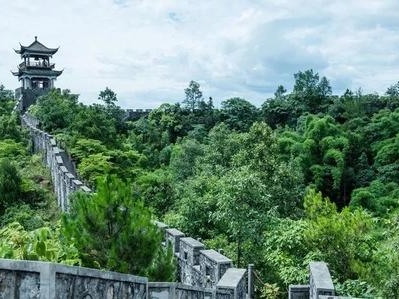
- Bell tower: The highest point of the Tusi City Wall is the Bell Tower, a three-story pavilion-style building with the city wall on the ground floor, the tower on the middle floor, and the pavilion on the top floor. A large bronze bell weighing more than 3,000 kg hangs in the pavilion, and a 999-character inscription is cast on the bell, describing the vicissitudes of the Tujia people’s history. Standing on the top floor of the bell tower, you can overlook the mountains in the distance, the city is lined with new buildings, and the magnificent scenery of the mountains and rivers has a panoramic view.
- Drum Tower: The Drum Tower and the bell Tower echo each other and also have a unique architectural style. In the past, the drum tower was commonly used to convey information and gather ethnic groups. Now it has become an important carrier for displaying Tujia culture. Visitors can learn more about the traditional customs and way of life of the Tujia people here.
- Baihuayuan: Baihuayuan is the “Imperial Garden” of Tusi Imperial City. The jade steps in the garden are exquisite, the rockery is uneven, the clear water swims with fish, and the winding paths show the wealth of the royal garden. In the garden, there are peach blossoms and cherry blossoms in spring, peonies and hibiscus in summer, honeysuckle and begonia in autumn, and plum blossoms in winter. There are many kinds of flowers and colorful colors. Coupled with the ancient cypress pine and the cultivation of bamboo in Maolin, it is really not a picture, it is better than a picture. Each toast pays attention to the setting of the pavilion garden to meet the leisure and entertainment of the royal family. This was once a place for the toast royal family to enjoy flowers, compose poems, fuqin, chant, and guess puzzles and fight grass.
- White tiger statue: The white tiger has an important position in Tujia culture and is regarded as the totem of the Tujia people. The statue of the white tiger is majestic and solemn, as if guarding this land and the people here, reflecting the Tujia people’s reverence for their ancestors and the inheritance of traditional culture.
- Crouching Tiger Iron Bridge: The iron cable bridge is located on the Crouching Tiger Ditch under Baihu Mountain. The bridge is 22 meters high, 66 meters long and 2 meters wide. The water under the bridge is trickling, and the mountains and trees on both sides of the river are lush. If people walk on the bridge, if they run hard, the body of the bridge will sway, bringing a different kind of experience to tourists.
- Tingtao Teahouse: Visitors can stop here for a while, taste a cup of fragrant tea, listen to the sound of the wind and waves outside the window, feel the tranquility and comfort, relax and enjoy a moment of leisure time.
- Ethnic art Garden: The ethnic art Garden displays traditional handicrafts, costumes, musical instruments, etc. of Tujia, Miao, Dong and other ethnic minorities, allowing visitors to gain an in-depth understanding of the cultural characteristics and artistic charm of ethnic minorities. Here, you can also enjoy live performances by folk artists, such as Tujia brocade weaving, paper-cutting, etc., and feel the unique charm of traditional handicrafts.
Precautions
- Enshi Tushi City has high summer temperatures and strong sunlight. Tourists need to take sun protection measures and bring sunscreen, sunglasses, sun hats, etc. At the same time, summer is also the rainy season in Enshi, so remember to carry rain gear with you.
- Some buildings in the scenic area are relatively old. Please pay attention to protecting cultural relics when visiting and do not touch or portray them at will.
- When enjoying the Tujia folk performances, please respect local cultural customs, abide by the order of the scene, and do not make loud noises.
- There are some dining options in the scenic area, but the taste and price may vary from person to person. Visitors can also bring their own snacks and drinking water in case of a rainy day.
- Enshi Toast City has a larger area and a longer tour time. It is recommended to wear comfortable sports shoes in order to better enjoy the beauty.
Enshi Tushi City, this ancient city that has carried the history and culture of the Tujia people for hundreds of years, is like a vivid history book, every page is full of stories. Here, you can travel through time and space, appreciate the majesty and magnificence of the Tusi Dynasty, and feel the ancient and honest folk customs of the Tujia people. Whether it is a scholar who is interested in history and culture, or a tourist who is eager to experience the customs of different ethnic groups, Enshi Tushi City is definitely a tourist destination not to be missed.



